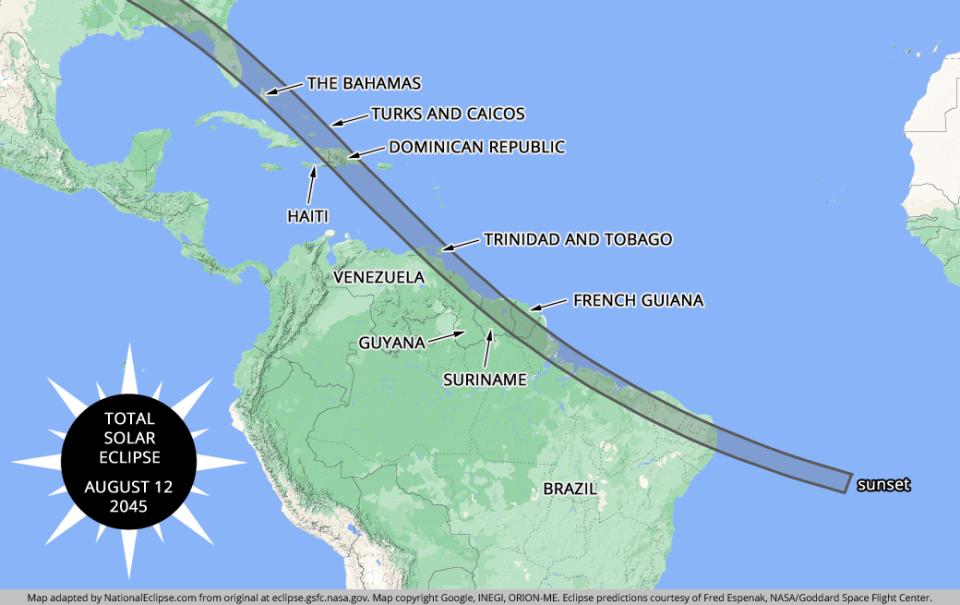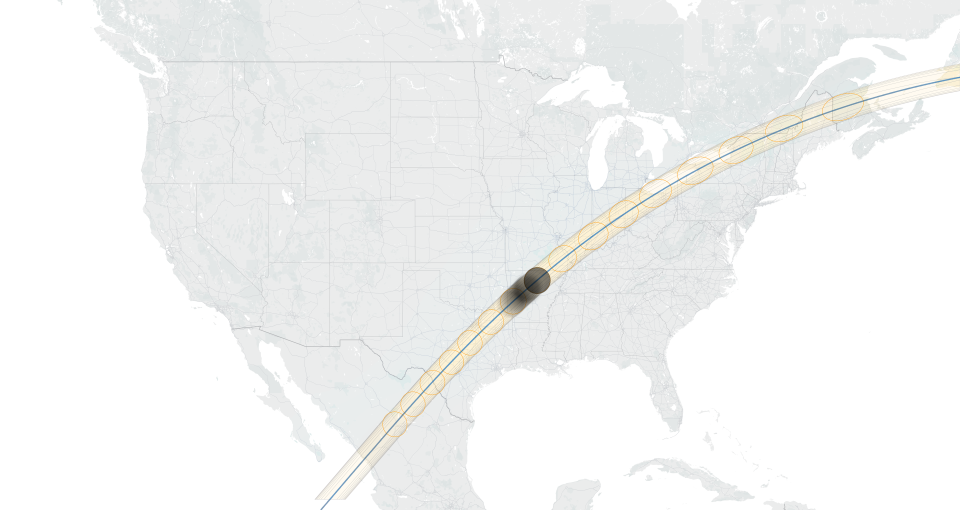When is the next total solar eclipse in the US after 2024 and what is its path? What to know
The highly anticipated 2024 total solar eclipse will cross North America on Monday, giving millions of sky-gazers the chance to see a rare cosmic event that won't be viewable again for 20 years.
The eclipse's path of totality will travel over a portion of northern Mexico before entering the U.S. It then it will cross 13 states from Texas to Maine, where the spectacle is expected to attract huge crowds.
If you aren't lucky enough to be in the path of totality this time around, you will have another chance - you'll just have to wait until the 2040s.
Here's what we know about the next total solar eclipse to cross over the U.S.
Eclipse playlist: Fans return to Bonnie Tyler's 'Total Eclipse of the Heart' ahead of total solar eclipse
When is the next total solar eclipse visible from the U.S.?
It will be 20 years before there's a chance to witness a total solar eclipse in the United States again.
According to NASA, after Monday's total solar eclipse, the next one viewable from the contiguous U.S. will be on Aug. 23, 2044.
2044 total solar eclipse path of totality
Unfortunately, the 2044 total solar eclipse won't have the broad reach across the U.S. as the 2024 eclipse.
The path of totality during the 2044 eclipse will only touch three states, according to the Planetary Society, a nonprofit involved in research, public outreach, and political space advocacy.
The eclipse will begin in Greenland, sweep through Canada and end around sunset in Montana, North Dakota and South Dakota.
Pets and the eclipse: Will my pets be safe during the April 2024 solar eclipse? What experts say.
2045 solar eclipse
While the 2044 total eclipse will only touch three states, a 2045 eclipse will have a more robust path across the U.S.
Expected to occur on Saturday, Aug. 12, 2045, this solar eclipse will trace a path of totality over California, Nevada, Utah, Colorado, New Mexico, Oklahoma, Kansas, Texas, Arkansas, Missouri, Mississippi, Louisiana, Alabama, Florida, and Georgia.
A partial solar eclipse will also be viewable in 35 other states, according to National Eclipse.com

What is a total solar eclipse?
Any celestial object like a moon or a planet that passes between two other bodies can create an eclipse by obscuring the view of objects like the sun.
In the event of a solar eclipse, the moon comes in between the Earth and the sun, blocking its light from reaching a small part of our planet. Partial eclipses, when some part of the sun remains visible, are the most common, making total eclipses a rare sight to behold.
Total eclipses can lead to a period of darkness lasting for several minutes, during which time nocturnal animals stir while confused birds and insects may fall silent, NASA says.
When a solar eclipse reaches totality, people are able to see the sun’s outer atmosphere called the corona, which is usually obscured by the sun's bright surface. This offers scientists an uncommon opportunity to study the corona.
Totality also offers spectators a chance to gaze upon the spectacular sight with the naked eye, though proper safety glasses are still required for the rest of the time.
What states are on the 2024 eclipse path of totality?
Mexico's Pacific coast will be the first location in continental North America to experience totality, which is expected to occur at about 11:07 a.m. PDT, according to NASA.
As the moon's shadow will northeast, totality in the U.S. will begin in Texas at 1:27 p.m. CDT. The path will then cut diagonally across the country, traveling through Oklahoma, Arkansas, Missouri, Illinois, Kentucky, Indiana, Ohio, Pennsylvania, New York, Vermont and New Hampshire.

The eclipse's path is expected to end in Maine at 3:35 p.m. EDT before visiting the maritime provinces of Canada, according to estimates.
See interactive maps of the 2024 path.
Contributing: Doyle Rice, Ramon Padilla & Janet Loehrke, USA TODAY
This article originally appeared on USA TODAY: When is the next total solar eclipse after 2024? Future date, path

